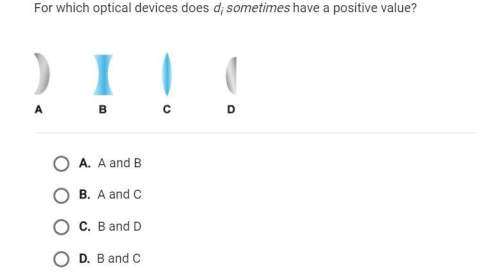
Physics, 23.09.2020 01:01 sierravick123owr441
An environmental scientist performs research to discover what is in the solid
garbage of the average American family. She calculates these amounts in
kilograms per year. The categories are paper, yard waste, metals, glass, plastics,
food scraps, and "other." Which kind of graph should she use to present her
finding, and how should the graph be labeled?
A. She should use a line graph. The x-axis should be labeled "Kind
of garbage." The y-axis should be labeled "kilograms per year."
B. She should use a circle graph. Each segment of the graph should
be labeled "number of kilograms per year."
C. She should use a bar graph. The bottom of each bar should be
labeled "kilograms per year." The vertical side should be labeled
"type of garbage."
D. She should use a bar graph. The bottom of each bar should be
labeled with the category of garbage. The vertical side should
have a scale and be labeled "kilograms per year."

Answers: 1


Other questions on the subject: Physics

Physics, 21.06.2019 20:00, johnLavender8262
The chemical effect of the endocrine system is longer lasting than the chemical effect of the nervous system. select the best answer from the choices provided t f
Answers: 3

Physics, 22.06.2019 12:50, starr3971
Air is contained in a variable-load piston-cylinder device equipped with a paddle wheel. initially, air is at 400 kpa and 17°c. the paddle wheel is now turned by an external electric motor until 75 kj/kg of work has been transferred to air. during this process, heat is transferred to maintain a constant air temperature while allowing the gas volume to triple. calculate the required amount of heat transfer in kj/kg.
Answers: 2

Physics, 22.06.2019 19:00, freddhendrickss
The built in flash in a compact camera is usally capable of giving correct exsposure for distance up to how many meters?
Answers: 1

Physics, 22.06.2019 20:50, dorkygirl
An ideal otto cycle has a compression ratio of 8. at the beginning of the compression process, air is at 95 kpa and 27°c, and 750 kj/kg of heat is transferred to air during the constant-volume heat-addition process. assuming constant specific heats at room temperature, determine (a) the pressure and temperature at the end of the heat-addition process, (b) the net work output, (c) the thermal efficiency, and (d) the mean effective pressure for the cycle. (4390 kpa, 1730 k; 423 kj/kg; 56.4%; 534 kpa)
Answers: 1
You know the right answer?
An environmental scientist performs research to discover what is in the solid
garbage of the averag...
Questions in other subjects:

Mathematics, 04.03.2021 20:30

Chemistry, 04.03.2021 20:30


Chemistry, 04.03.2021 20:30


Mathematics, 04.03.2021 20:30








